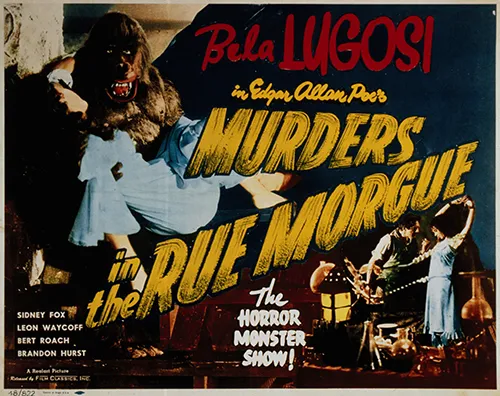
Edgar Allan Poe: A Life of Mystery and Imagination
Edgar Allan Poe was an American writer, poet, and literary critic who lived in the 19th century, known for works such as The Raven and Fall of the House of Usher. He is widely regarded as a pioneer of the detective fiction genre and is credited with contributing to the development of the modern short story.
Poe’s life and work were marked by a fascination with death and the macabre, which can be seen in many of his most famous stories and poems.
Edgar Allan Poe: Early Life at a Glance
- Poe was born in 1809 in Boston, Massachusetts, to actors David and Elizabeth Poe. Orphaned at a young age, Poe was taken in by the Allan family, who gave him his middle name.
- Poe’s childhood was marked by poverty and instability. While he struggled to find his place in the world, he was a gifted student and excelled in his studies.
- Poe began writing at a young age, and his first book, “Tamerlane and Other Poems,” was published in 1827 after he had just turned 18.
- Poe went on to write several other books of poetry and short stories, but it was his 1841 story “The Murders in the Rue Morgue” that established him as a master of the detective genre.
This story featured the iconic character of C. Auguste Dupin and is noted as the first detective story ever published in popular American fiction. Poe’s other famous detective stories include “The Mystery of Marie Roget” and “The Purloined Letter.”

Poe’s Writings and Life
Poe’s interest in the macabre and the supernatural can be seen in many of his other stories and poems, such as “The Fall of the House of Usher,” “The Tell-Tale Heart,” and “The Raven.” These works are considered masterpieces of the horror genre and continue to be popular to this day.
Poe’s writing style was characterized by his use of vivid imagery and his ability to create a sense of unease and tension in his readers.
His literary criticism was also influential during his lifetime and he wrote essays such as “The Philosophy of Composition” and “The Poetic Principle” which analyse the structure and effect of poetry.
Poe’s personal life was plagued by tragedy and hardship. He struggled with alcoholism and financial difficulties, and his marriage to his cousin Virginia Eliza Clemm was marred by her early death from tuberculosis.
The Murders at the Rue Morgue
“The Murders in the Rue Morgue” is a short story first published in 1841. It is considered to be the first detective story ever written and established Poe as a master of the genre. The plot follows the investigation of a series of brutal murders that take place in the Rue Morgue in Paris. The story’s protagonist, C. Auguste Dupin, is a brilliant detective who uses his intellect and powers of observation to solve the crime.
The story begins with the discovery of the brutal murder of Madame L’Espanaye and her daughter, Camille, whose bodies are found in their apartment. The police are called to the scene to investigate. However, despite their efforts, the police are unable to find any clues or suspects. Dupin, a friend of the narrator, becomes interested in the case and decides to investigate it himself.
Dupin quickly establishes a theory that the murders were committed by a wild animal, possibly an orangutan. However, Dupin is met with scepticism by the police, who believe that the murders were committed by a human. Dupin sets out to prove his theory by visiting the crime scene and analyzing the evidence. He discovers that the only window in the apartment that could have been used as an entry point for the murderer was locked from the inside and that the only key to the window was missing.
His investigation next leads him to a sailor who just returned from the East Indies and brought an orangutan with him. The animal had escaped. Dupin confronts the sailor and the orangutan, who is covered in blood, and the animal is captured and killed. The sailor confesses to the crime and is arrested by the police.
The story explores themes of reason and rationality versus brute force and emotion. Dupin’s methodical, logical approach to solving the crime is contrasted with the police’s reliance on brute force and intuition.
The Tell-Tale Heart
“The Tell-Tale Heart” is a short story written in 1843. It follows an unnamed narrator who is on trial for the murder of an old man with whom he lived. The story is known for its intense psychological intensity, as the narrator’s obsession with the old man drives him to commit murder. The story explores themes of guilt, insanity, and the power of the human mind.
The story opens with the narrator claiming that he is not mad, despite the accusations from the police and society. He insists that he is “as sane as you or anyone else.” The narrator recounts how he came to live with the old man, who was “meagre of flesh” and had a “vulture-like” eye that the narrator found repulsive. He slowly becomes fixated on the old man’s eye, which he believes is evil and must be destroyed.
As the days go by, the narrator’s obsession becomes more and more intense. He begins to hear the heart beating loudly in his ears, and he becomes convinced that the old man knows his thoughts and is mocking him. He waits until the old man is asleep, and then he creeps into his room and kills him.
The narrator still hears the heart beating loudly in his ears, and he is convinced that the old man’s ghost is coming to get him. He dismembers the body and hides it under the floorboards, but the beating heart becomes louder and louder in his ears. The narrator cannot take it anymore and confesses to the crime.
The story’s intense psychological intensity and exploration of the darker aspects of human nature make this a classic example of Poe’s writing, and it continues to be widely read and studied to this day.
The Raven

“The Raven” is a poem written in 1845. It relates the story of a man who is visited by a talking raven, which speaks the word “Nevermore” in response to the man’s questions and musings. The poem is known for its melancholic tone, its use of repetition, and its exploration of themes of loss, grief, and the human condition.
The poem begins with the narrator sitting alone in his chamber, lost in thought and trying to forget the loss of his lover, Lenore. Suddenly, there is a knock at the door, and the narrator opens it to find a raven perched on the door frame. The raven enters the room and speaks the word “Nevermore.” The narrator is initially startled, then becomes fixated on the raven and begins to question it, asking if he will ever see his beautiful Lenore again.
The raven responds with “Nevermore.”
The narrator becomes convinced that the raven is a symbol of his guilt and grief, and he begins to see the raven everywhere he goes. Its constant repetition of the word “Nevermore” becomes a metaphor for the narrator’s inability to move on from his grief and find closure.
The poem is written in a melancholic and sombre tone, which adds to the sense of despair and hopelessness. The use of repetition, particularly the repetition of the word “Nevermore,” and the raven’s presence serve as a symbol of the narrator’s guilt and grief, as well as the finality of death.
The Mysterious Death of Edgar Allan Poe
Edgar Allan Poe died under mysterious circumstances in 1849. The exact cause of his death has been a subject of much speculation and debate among literary scholars, and several theories have been proposed over the years.
- One of the most popular theories is that Poe died because of his alcoholism. He struggled with drinking throughout his life. The reason some experts believe that Poe’s alcoholism led to his death was that he was in a state of delirium when he was found just before he died.
- Another theory is that Poe had tuberculosis. Poe’s wife, Virginia Eliza Clemm, died of tuberculosis, and it is believed that Poe may have contracted the disease from her. Some experts believe that tuberculosis led to pneumonia, which finally took his life.
- A third and more intriguing theory is that Poe died of cooping. Cooping was a practice in which people were kidnapped and forced to vote multiple times in elections under different identities. Some believe that Poe may have been a victim of this and that he died as a result of the injuries he sustained during the process though the evidence for this is scant.
- Lastly, there is a theory that Poe’s death was a murder. Some believe that he was killed by political enemies, or by someone with a personal grudge against him. Again, there is not much evidence to support this possible cause.
Poe in Film
Edgar Allan Poe is one of the most celebrated and enduring figures in American literature, and his stories and poems have been adapted into films many times over the years.
Poe’s influence can be seen in everything from early silent films to more modern movies. While there are different interpretations and styles of his work, they all have one thing in common, the mysterious and macabre atmosphere that Poe’s works are known for.
One of the earliest films based on Poe’s work was the 1910 silent film “The Raven.” The film was directed by J. Stuart Blackton and it tells the story of a man who is haunted by a talking raven, which speaks the word “Nevermore” in response to the man’s questions and musings. The film was well-received and it is now considered one of the first horror films in the history of cinema.
Another notable adaptation of Poe’s work was the 1960 film “House of Usher,” directed by Roger Corman. The film is based on Poe’s short story “The Fall of the House of Usher” and it tells the story of a man who visits a mysterious and crumbling mansion, where he becomes embroiled in a web of madness and murder. Starring Vincent Price, it remains a classic of the genre to this day.
In recent years, Poe’s work has been adapted into films with more modern styles and techniques. One such example is the 2010 film “The Raven” directed by James McTeigue and starring John Cusack as Poe himself. The movie tells the story of a serial killer who is inspired by Poe’s work and uses it to taunt the police. The film received mixed reviews, but it was praised for its stylish visuals and its faithful adaptation of Poe’s work.
Poe’s short stories have also been adapted into animated films, such as “The Tell-Tale Heart” which was nominated for an Academy Award for Best Animated Short Film in 1953.
Edgar Allan Poe and the Pale Blue Eye
The Pale Blue Eye is a novel by Louis Bayard that was published in 2006. The story is set in 1830 at the United States Military Academy at West Point and follows the investigation of a series of murders by a detective named Leander Whitney.
The novel takes its title from a description of one of the murder victims, who had a pale blue eye. The book is a mystery novel, but it also explores the social and cultural context of the time in which it is set.
One of the most interesting aspects of The Pale Blue Eye is the way it references and is influenced by the works of Edgar Allan Poe. The Pale Blue Eye incorporates familiar themes and motifs, such as the idea of the detective as a lone figure trying to uncover the truth and the use of the macabre and the supernatural.
Poe’s influence can be seen in the character of Leander Whitney, who like Poe’s detective, C. Auguste Dupin, is a solitary figure, driven by his obsession with solving the murders. Poe is a young academy member in the story and is integral to the solving of the mystery and the final shocking conclusion.

